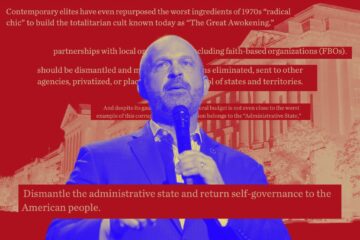James Goodwin in the Boston Review:
 The week after taking office in 2017, Donald Trump announced his administration’s signature policy on the administrative state—the constellation of agencies, institutions, and procedures that Congress has created to help the president implement the laws it passes—when he signed Executive Order 13771. The directive purported to create a “regulatory budget” scheme that prohibited agencies from issuing a new rule unless they first repealed two existing rules and ensured that the resulting cost savings offset any costs the new rule might impose.
The week after taking office in 2017, Donald Trump announced his administration’s signature policy on the administrative state—the constellation of agencies, institutions, and procedures that Congress has created to help the president implement the laws it passes—when he signed Executive Order 13771. The directive purported to create a “regulatory budget” scheme that prohibited agencies from issuing a new rule unless they first repealed two existing rules and ensured that the resulting cost savings offset any costs the new rule might impose.
The effort failed. While federal agencies reduced their regulatory output during the Trump administration, they made little lasting progress in repealing existing rules. The Administrative Procedure Act, which governs much of how the administrative state operates, makes it hard to do so. Most of the Trump administration’s repeal attempts were met with rejection by federal courts for failing to abide by basic procedural requirements.
Still, Executive Order 13771 perfectly encapsulated conservative thinking about regulatory policy at the time. The goal was to bring about the “deconstruction of the administrative state,” as former Trump advisor Steve Bannon famously put it.
More here.
Enjoying the content on 3QD? Support our website by donating now and keep 3QD going.
